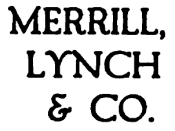Intersect Investment Benchmarking � PAGE \* Arabic �22�
Running head: INTERSECT INVESTMENT BENCHMARKING
Intersect Investment Benchmarking
University of Phoenix
MBA 520 - Transformational Leadership
Professor Michael Sawyer
November 5, 2007
Intersect Investment Benchmarking
Like many others in the financial service industry, Intersect Investment Company has struggled since September 11, 2001. In the search for a solution to their problem, it will be important for Intersect to conduct benchmarking research. The following is an analysis of benchmarking data from 10 companies that have successfully or unsuccessfully navigated through similar situations. Following the analysis, the initial benchmarking material is provided. The benchmarking data along with the analysis can be used to develop alternative solutions for Intersect Investment Company.
Concept Analysis
Since 2001, the financial industry has been a volatile climate, with firms "struggling to keep both their clients" trust and Wall Street's credibility," (Intersect Investment, 2007, p.1). Intersect Investment has had their share of issues in the past year as their revenue targets have not met goals, sales employee turnover is up 25%, customer satisfaction has declined 10%, and customer attrition has increased to 25% a year (Intersect Investment, 2007).
Intersect Investment has identified several issues within the organization and needs to make adjustments quickly in order to reverse their sales, customer and employee satisfaction trends. Intersect Investments should conduct benchmarking research to determine how to best identify changes that need to be made, analyze the implications of different leadership styles on the change management process, evaluate the influence of leadership on management practices, select leadership styles for a given situation, analyze the factors that contribute to a long-term commitment to change, and appraise future leadership challenges. "Old practices will not be effective in a future that requires innovation, fast responses, horizontal relationships, high engagement levels and optimum performance from assets...



Very complete
May be a bit too long, has incredible references listed.
0 out of 0 people found this comment useful.